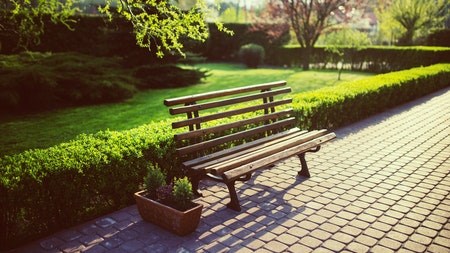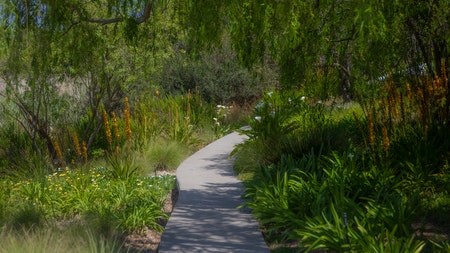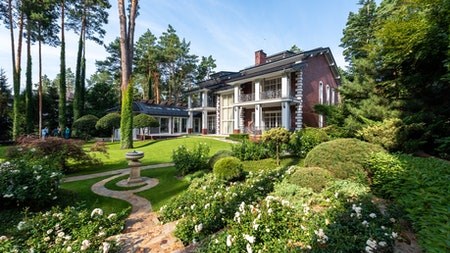There is lots to be done in the garden every month of the year. Even in early June, when days are still getting shorter and the nights are getting longer, your garden is alive with the promise of spring.
Here are some June gardening tips from Life is a Garden, the marketing division of The South African Nursery Association (SANA). This organisation promotes gardening as a hobby for all South Africans.
WATCH : Grow vegetables and herbs with this innovative system
Gauteng
Hanging baskets of mixed winter annuals on your patios adds a splash of instant colour. Dianthus, ansies, stocks, petunia, lobelia and viola will work in sunny spots, and primroses and primulas will do well in the shade. Add water retention granules to potting soil to prevent hanging baskets from drying out too quickly. If you don't have any, break up old pieces of floral foam to mix into the potting medium.
Start preparing trenches for raspberries, youngberries and loganberries in your food garden: plant horseradish, asparagus, global artichokes and rhubarb.
KwaZulu-Natal
Deadhead flowering shrubs and other flowers and continue fertilising with a water-soluble fertiliser. Protect the frost-sensitive plants like cinerarias. Many annual and perennial seedlings such as petunias are still ready for planting in May. Watch out for the common garden insect called aphids, especially on young flower buds. These insects have several natural enemies, but an excellent soapy water spray will help kill them off.
In the food garden, plant small numbers of lettuce at regular intervals; they tend to bolt in the heat. Sow late crops of cucumbers, squashes, pumpkins, maise and beans.
Stake tomatoes and runner beans are also suitable for June. Harvest avocados and citrus. June sees icy mornings, so protect young subtropical fruit trees against the frost. Do not prune back spring-flowering shrubs like Cape may (Spiraea) or weigelias in winter, as this removes all of next season’s flower buds.
Western Cape
Check out the nurseries for new and old hybrids of fynbos such as proteas, leucospermums (pincushions) and leucadendrons; and plant as many as possible. They also grow in pots. Fynbos needs the rainy winter to blossom well before summer.
Ensure that stakes and ties supporting standard roses and young trees are secure. Remember to pack away or tie down your garden furniture – a strong North-Wester can easily lift a cast iron garden chair and pitch it into the neighbour’s yard.
Clear drains and gutters of debris as the debris might clog gutters, causing severe flooding into your home.
Start winter pruning: Prune peach, plum, apricot trees and vines at the end of June and spray with lime sulphur. Last year's supply will have lost its potency, so buy fresh stock and use only on plants that have become completely dormant.
Eastern Cape
If you haven’t yet planted any spring-flowering bulbs, there is still time to plant freesias, as these plants are forgiving. Plant freesias in hanging baskets, sprinkle them with Lobularia (alyssum) seed and keep them moist. Bulbs will soon start growing through the young alyssum seedlings.
Vygies grow all over the veld in this region, and come spring; they create veld magic. By then, though, they have become scarce in nurseries as everybody wants them. So buy all kinds of vygies now before they flower to plant in often neglected and dry areas of the garden and on kerbs. These spaces will be covered in satiny flowers from late winter.
Free State
To prepare for regal flowers in summer, plant liliums in the garden or pots. To protect them from the cold, mulch them well and keep the soil moist.
Known as the stalwarts of winter, Conifers grow actively in June. Ones like the popular Gold Crest need to be pruned and shaped. Low-growing types like Prince of Wales can be added as a ground cover or planted in containers and allow them to trail over the edges.
Combine conifers with dwarf purple-red flaxes (Phormium) and the dwarf Nandina Pygmaea, which turns intensely bright red in winter.
Create good silhouettes with pruning. Deciduous trees will stand bare, perfectly displaying their framework of branches. This will allow you to remove old and diseased growth or low and overhanging branches and enhance their natural shape.
Limpopo
Refurbish old pathways by lifting the pavers, levelling with sand, installing weed guard and then repaving. Make your pebbled areas look fresh again by raising them, cleaning up their spot, and repacking them . The first frost can burn plants. Don’t be tempted to trim them, as the burnt parts protect the plant. Pruning your plants can encourage new growth if the weather suddenly turns mild again. However, this new growth can easily be damaged if it turns icy again.
Mpumalanga
Plant lots of succulents in hanging baskets in the braai Lapa. Plant upright-growing ones in the centre of the basket and fill in around the sides with trailing and spreading types. All the pretty crassulas, kalanchoes and sedums are at their best in nurseries around May.
Thick clumps of echeverias can be divided by cutting off the rosettes with a piece of stem intact, cleaning the old rotten leaves from their bases and replanting them into the garden or in pots. Keep them on the dry side for a few days until settled again.
Fertilise citrus trees in June with 3:1:5 or 8:1:5. Additional foliar feeding with a water-soluble fertiliser is beneficial for young lemon trees and those growing in pots. Yellowing leaves can be corrected with a microelement mixture. Fertilise papaws with 3:1:5. Water well before and afterwards. Encourage mango trees to flower well by keeping them dry until the end of July.
All provinces
In all areas of the country, now is the ideal time to do hard-landscaping maintenance, and your June garden would not be complete without the breath-taking beauty of colourful camellias. They bring an effervescent quality to the winter garden, with their flowering season starting in early autumn and continuing through to spring.
Remember to water camellias very deeply once a week.
Enjoy winter gardening and let your plants stay healthy while your environment sparkles.
Writer : Sarah-Jane Meyer




